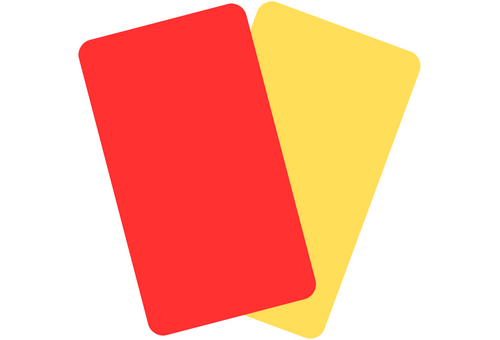Volleyball Fouls and Violations: A Comprehensive Guide

Volleyball is a thrilling sport that requires teamwork, skill and adherence to rules to ensure fair play. Among the fundamental aspects of the game are fouls – violations of regulations that can lead to penalties for the offending team.
In this article, we’ll delve into the world of volleyball fouls and violations, covering everything from their definition to types and penalties.
What exactly are fouls in volleyball?
Fouls in volleyball refer to rule infractions committed by players during a match. These infractions can occur during various phases of play, including serving, blocking, attacking and positioning on the court. When a player or team commits a foul, the opposing team is typically awarded a point, side-out or serve, depending on the specific circumstances and severity of the infraction.
Are there technical fouls in volleyball?
Yes, in addition to standard fouls related to gameplay, volleyball also recognizes technical fouls. Technical fouls usually involve violations of administrative or procedural rules rather than actions directly related to gameplay. These infractions can result in penalties such as warnings, yellow cards, or red cards, depending on the severity and frequency of the violation.
Now, let’s explore the different types of fouls in volleyball and their implications on the game.
What are considered fouls in volleyball?
Ball Handling Violations
Double Contact: This occurs when a player contacts the ball twice in succession or if two players on the same team make simultaneous contact with the ball. It often results in a loss of possession or a point awarded to the opposing team.
Lift or Carry: When a player holds or carries the ball instead of cleanly striking it, it’s considered a lift or carry violation. Like double contact, this infraction leads to a turnover or point for the other team.
Net Violations
Touching the Net: Players are prohibited from touching the net with any part of their body while the ball is in play. Even the slightest contact with the net can result in a foul and a point awarded to the opposing team.
Net Penetration: This occurs when a player’s actions cause the net to move into the opponent’s court during play. It’s important for players to maintain their distance from the net to avoid this infraction.
Illegal Blocking
Reaching Over: Blocking a ball while reaching over the net into the opponent’s playing space is strictly prohibited. This action interferes with the opponent’s ability to make a play and is penalized accordingly.
Blocking the Setter: Interfering with the setter’s ability to set the ball is considered an illegal block. This violation often occurs when a player intentionally blocks the setter’s view or movement.
Serving Infractions
Foot Fault: Serving while stepping on or over the service line results in a foot fault violation. It’s essential for players to maintain proper positioning during serves to avoid this infraction.
Screening: Intentionally obstructing the receiver’s view of the server is against the rules. This infraction is often called when players position themselves too close to the opponent during a serve.
Positional Faults
Rotation Errors: Failing to rotate properly during service reception or violating the rotational order of players on the court can result in a rotational fault. It’s crucial for teams to adhere to the rotation rules to avoid penalties.
Back Row Attack Violations: Back row players are not allowed to jump and attack the ball in front of the 3 meter line. This rule is designed to maintain fairness and prevent back-row players from gaining an unfair advantage.
Behavioral Fouls
Unsportsmanlike Conduct: Engaging in disrespectful or aggressive behavior towards opponents, officials, or teammates is considered unsportsmanlike conduct. Such behavior can result in penalties and ejection from the match.
Delay of Game: Deliberately stalling or prolonging the match without a valid reason is against the rules. Players and teams are expected to play at a reasonable pace to maintain the flow of the game.
Fouls and Penalties in Volleyball
When a foul occurs during a volleyball match, the officiating team applies penalties to maintain fairness and sportsmanship on the court. Let’s examine the penalties associated with common fouls and technical infractions:
Penalties for Common Fouls
- Point Awarded: In cases where a foul directly results in an advantage for the offending team, the opposing team is awarded a point.
- Side-Out: When a serving infraction or rotational error occurs, the opposing team gains the serve, effectively ending the offending team’s scoring opportunity.
- Loss of Serve: Serving fouls, such as foot faults or screening, result in the offending team losing their serve, with possession transferring to the opposing team.
Technical Fouls and Disciplinary Actions
- Warnings: Officials may issue verbal warnings to players or coaches for minor infractions or rule violations.
- Yellow Cards: A yellow card is a formal warning issued to a player, coach, or team for misconduct or repeated rule violations. Multiple yellow cards can result in more severe penalties.
- Red Cards: Red cards are reserved for serious misconduct or flagrant rule violations and result in immediate ejection from the match.
Conclusion
Understanding fouls in volleyball is essential for players, coaches and officials to ensure fair play and maintain the integrity of the game. By familiarizing themselves with the rules and consequences of fouls, participants can enhance their enjoyment and appreciation of this dynamic sport.
Remember, whether you’re serving, setting, or spiking, playing by the rules is always a winning strategy on the volleyball court.

